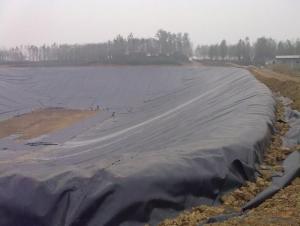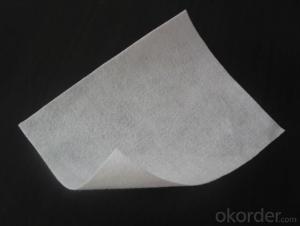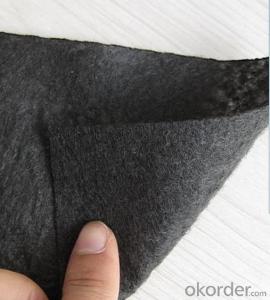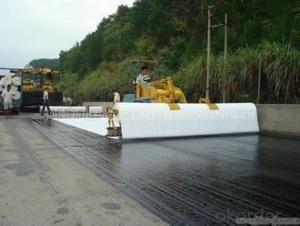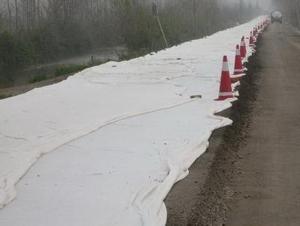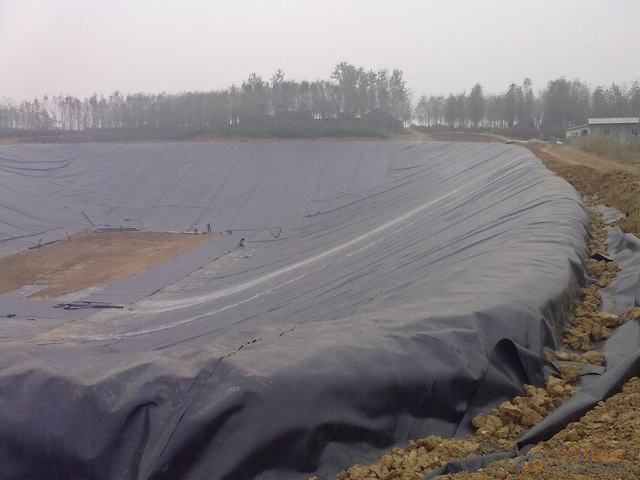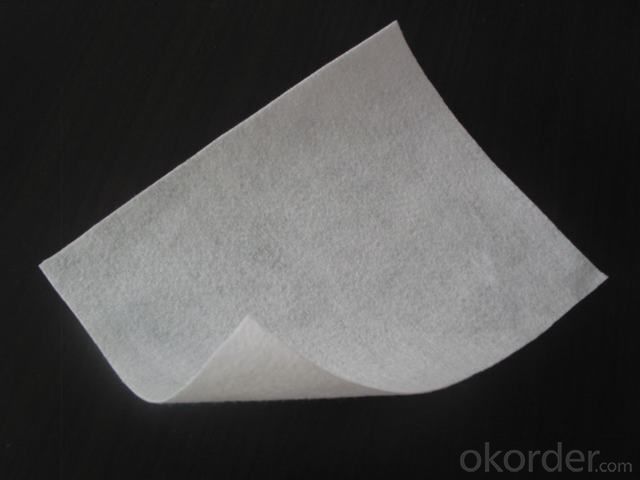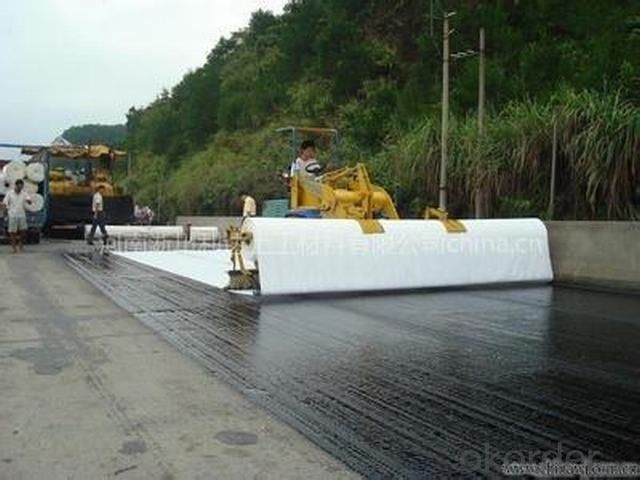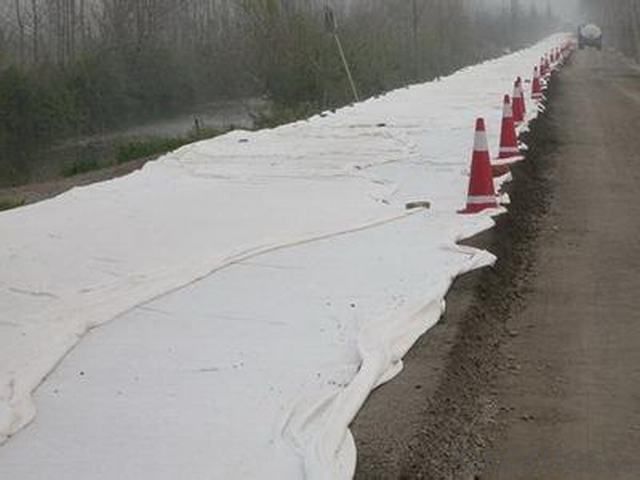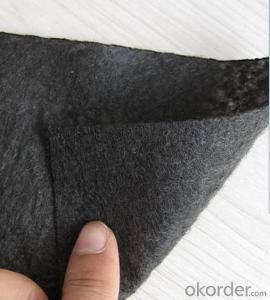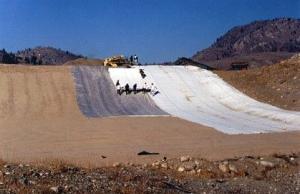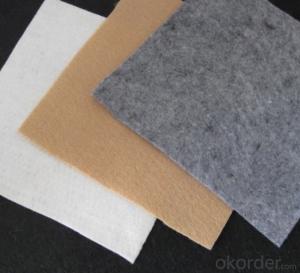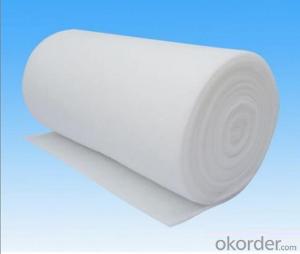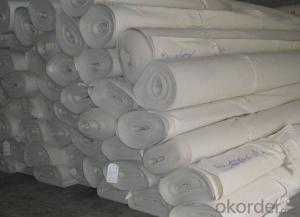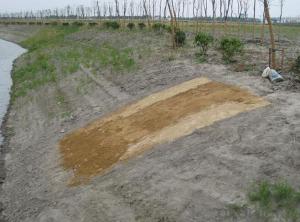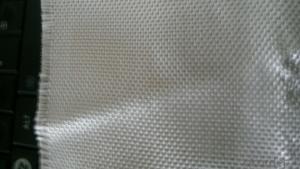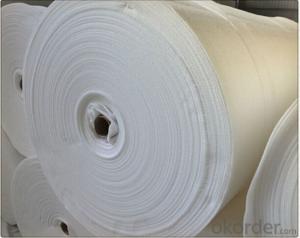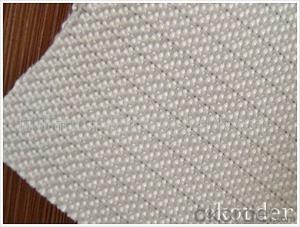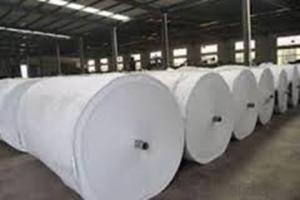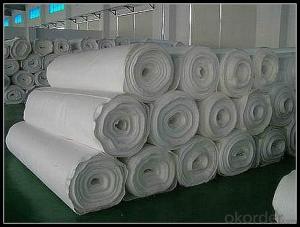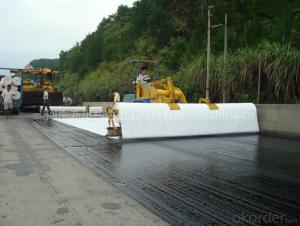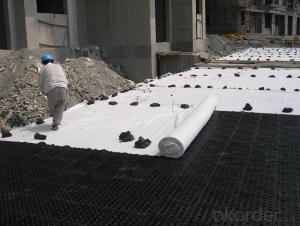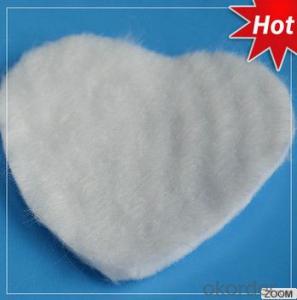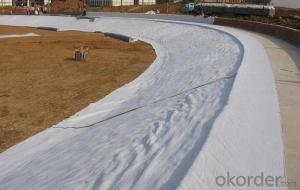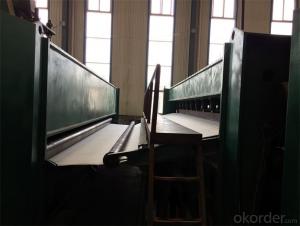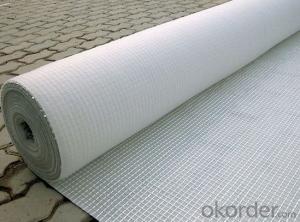Northwest Linings & Geotextile Long Fiber Geotextile for Railway Construction
- Loading Port:
- Qingdao
- Payment Terms:
- TT OR LC
- Min Order Qty:
- 20000 m²
- Supply Capability:
- 1500000 m²/month
OKorder Service Pledge
OKorder Financial Service
You Might Also Like
Product Description of Long Fiber Geotextile Introduction:
1. Filtration
It can be the filtration layer of the dykes, river canal, seacoast, concrete slope, retaining walls. At the same time of preventing the clay granule from passing, it allows the water and the gas pass through freely.
2. Separation
The isolation of the railway dregs and the roadbed, roadbed and the soft base, surface of the airdrome and parking lot and the groundsill, different dam materials. It isolates the soil and the gravel of two kinds different granule pathway from the groundsill or other buildings.
3. Reinforcement
The highway, railway, soilstone dam, breakwater, airport, backfill soil of retaining wall, slope protection, etc in which distributes the earth stress, prevents the side-displacement of the earth body and improves the earthbody stability.
4.Protection
It prevents the bank from being washed out, protects the bank and the bottom, prevents the water and soil from being washed away.
5. Anti Aging
The fabric can also be heat treated by infrared at customer's requirements. Our geotextile are UV stabilized to give protection against aging under exposure to natural ultra-violet light.
6. Applications
It is widely used in the areas of railway, highway, water conservancy, dam, tunnel, subway, environmental protection and so on
- Q: How do geotextiles help with waste containment systems?
- Geotextiles help with waste containment systems by acting as a barrier and providing reinforcement. They prevent the migration of waste materials, such as landfill leachate or contaminated soil, by effectively separating and containing them within the system. Geotextiles also enhance the stability and durability of the containment system by distributing loads and reducing the risk of punctures or tears.
- Q: Can geotextiles be used in geosynthetic reinforced walls?
- Yes, geotextiles can be used in geosynthetic reinforced walls. Geotextiles are commonly used as a separation and filtration layer in geosynthetic reinforced walls. They help prevent the migration of fine particles and provide stability to the soil layers, enhancing the overall performance and longevity of the wall.
- Q: How many meters from the river pipe trench construction using geotextile reinforcement
- River slope protection, etc. can use my professional production of geotextile products. Thank you
- Q: Can geotextiles be used for erosion control in golf courses?
- Yes, geotextiles can be used for erosion control in golf courses. Geotextiles are commonly used to stabilize soil and prevent erosion by providing a barrier against water flow and promoting vegetation growth. This can be particularly beneficial in golf courses where erosion can occur due to heavy rainfall, slope instability, or foot traffic. By installing geotextiles in strategic areas, such as on steep slopes or around water bodies, golf courses can effectively control erosion and maintain the integrity of their grounds.
- Q: What are the materials used for spinning geotextiles?
- Spinning is made of synthetic fibers through acupuncture or weaving made of permeable geosynthetics. There are at least two sets of parallel yarns (or flat yarn), a group of looms along the loom (the direction of fabric travel) called warp yarns, another group The horizontal arrangement is called weft yarn.With the different weaving equipment and the process, the warp and the weft are woven together into a cloth, and can be knitted into different thickness and density according to different use range. Generally, the spinning and weaving cloth is thin and vertical Have a very strong tensile strength (longitude than latitude), with good stability. There are spinning geotextile according to the weaving process and the use of latitude and longitude is divided into reinforced geotextile and non-reinforced geotextile two categories, plus The tensile strength of the geotextile is much larger than that of the ordinary geotextile, and the general application of the geotextile is reinforced with the reinforcement of the geotextile project. The main function is reinforced by reinforcement and has the function of plane isolation and protection. Can be selected according to the specific purpose of use.
- Q: How are geotextiles affected by temperature variations?
- Geotextiles are affected by temperature variations as they can expand or contract based on the temperature changes. This expansion or contraction can impact their effectiveness in various applications such as erosion control, filtration, or drainage. Additionally, extreme temperatures can weaken the fibers of geotextiles, reducing their overall durability and lifespan. Therefore, temperature variations need to be considered while selecting and designing geotextile systems to ensure their optimal performance and longevity.
- Q: Can geotextile be used as an insulation film?
- Yes, the company produces the country, the best quality geotextile materials, for example, long, short wire geotextile. Geotextile composite film. All kinds of grille, waterproof board and so on. Short wire geotextile prices, geotextile composite film specifications and other quality and cheap! The The Welcome to call to discuss, 0534-. Xujing Li.
- Q: How do geotextiles help with soil separation and stabilization?
- Geotextiles help with soil separation by acting as a barrier that prevents the mixing of different soil layers. They also aid in soil stabilization by providing reinforcement and strength to the soil, reducing erosion and maintaining the stability of the ground.
- Q: Can geotextiles be used in the construction of agricultural ponds?
- Yes, geotextiles can be used in the construction of agricultural ponds. Geotextiles can be employed as a barrier or liner in the pond to prevent seepage, erosion, and contamination. They help in stabilizing the soil and provide reinforcement, ensuring the longevity and durability of the agricultural pond.
- Q: Do geotextiles affect soil pH levels?
- No, geotextiles do not affect soil pH levels as they are primarily used for erosion control and soil stabilization rather than altering the chemical composition of the soil.
Send your message to us
Northwest Linings & Geotextile Long Fiber Geotextile for Railway Construction
- Loading Port:
- Qingdao
- Payment Terms:
- TT OR LC
- Min Order Qty:
- 20000 m²
- Supply Capability:
- 1500000 m²/month
OKorder Service Pledge
OKorder Financial Service
Similar products
Hot products
Hot Searches
Related keywords
